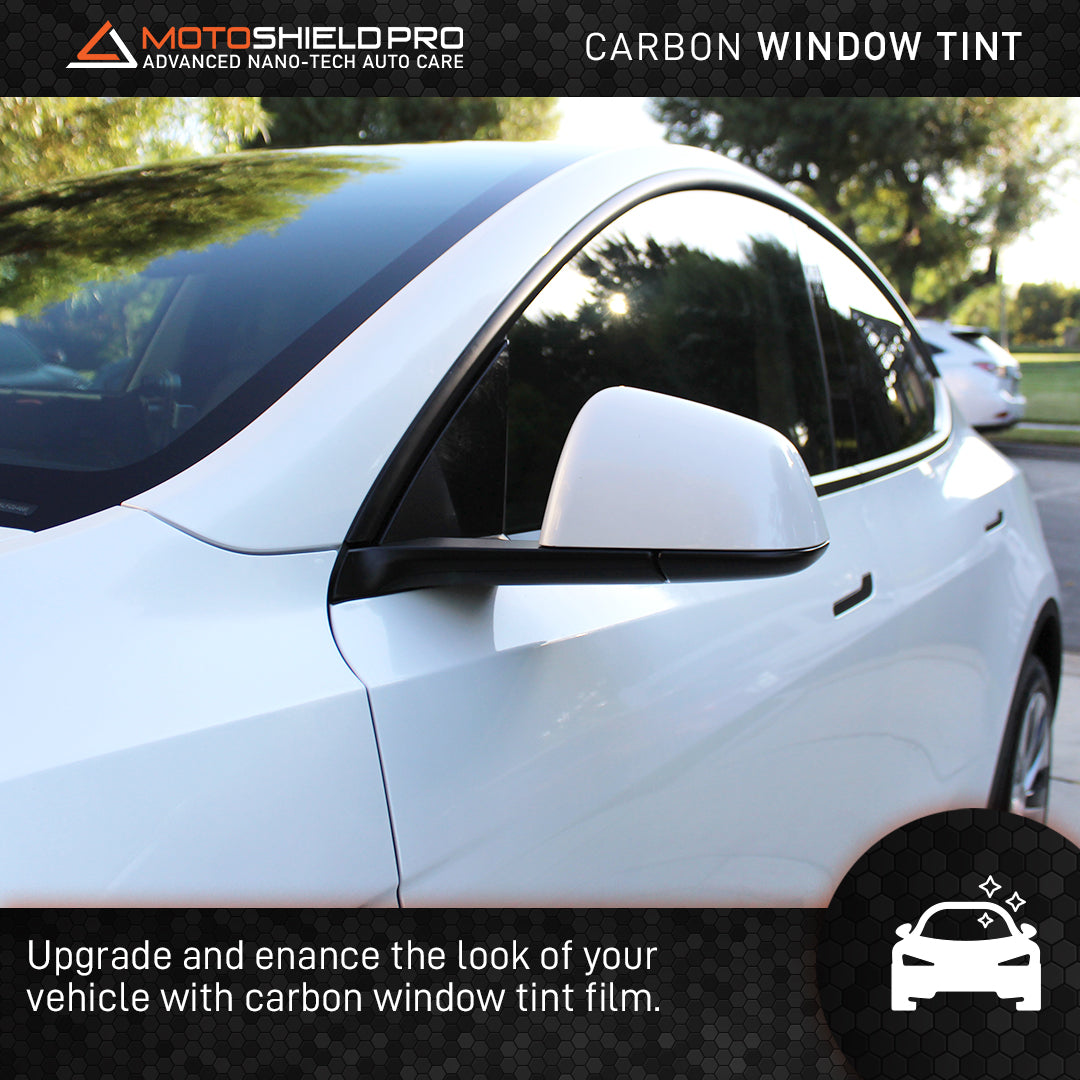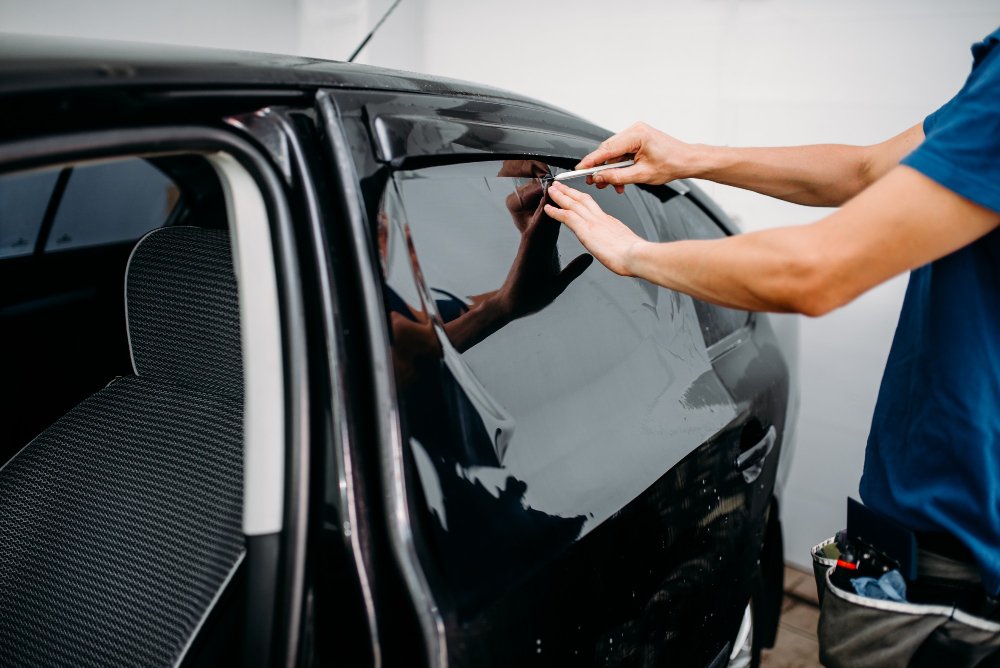Everything You Need to Understand About Automobile Window Tinting for Your Car
Vehicle home window tinting is a practical improvement for many vehicle owners. It offers advantages such as boosted convenience and power efficiency. Different tint films satisfy different needs and choices. However, understanding lawful policies and choosing the appropriate tint percent is crucial. The setup process and appropriate maintenance also play substantial duties in making sure the longevity of the tint. What other variables should one think about before choosing on home window tinting?
Benefits of Automobile Window Tinting
Some car owners might neglect it, automobile window tinting deals many benefits that improve both the driving experience and the vehicle's durability. Among the key benefits is the decrease of warmth buildup inside the automobile, permitting for a more comfy ride, specifically throughout warm weather. This can bring about reduced dependence on cooling, improving fuel efficiency.Additionally, window tinting offers protection versus dangerous UV rays, which can cause skin damages and discolor indoor materials over time. By obstructing these rays, the tint assists preserve the vehicle's interior and keep its resale value.Moreover, tinted home windows can enhance personal privacy and safety and security, as they make it harder for outsiders to see inside the vehicle. This added layer of security can discourage possible burglary. In general, auto home window tinting works as a useful investment that adds to the automobile and both convenience's general well-being.
Sorts Of Home Window Color Films
When taking into consideration vehicle home window tinting, automobile owners encounter a variety of window color films, each developed to fulfill details needs and choices. The very first category is colored home window movie, which provides a standard degree of privacy and UV defense while being economical. Next, metalized films include tiny metal fragments, reflecting warm and enhancing sturdiness, although they may disrupt digital signals.Ceramic movies are one more alternative, understood for their superior heat denial and clearness, using high performance without signal interference. Lastly, hybrid movies incorporate attributes of colored and metalized movies, striking an equilibrium between cost and capability. Each kind of window color film provides unique advantages, permitting car owners to select based upon their particular needs, such as warm control, budget, and look considerations. Understanding these options is important for making a notified decision pertaining to automobile window tinting.
Understanding Lawful Rules
When taking into consideration auto home window tinting, it is critical to understand the legal guidelines that control tint darkness limits and windshield tint needs. These policies can vary significantly from one state to another, impacting what is permitted for lorry owners. Familiarizing oneself with these laws assurances conformity and helps prevent possible fines or fines.
Color Darkness Limitations
Exactly how can car proprietors assure they remain compliant with neighborhood legislations relating to window tinting? Comprehending tint darkness limitations is necessary. Each state has details laws that dictate the acceptable degrees of darkness for window colors, which are determined by Visible Light Transmission (VLT) percents. Generally, front-side home windows should permit a higher portion of light contrasted to rear windows. Some states might enable just 30% VLT for front home windows, while the back home windows may be allowed to have significantly darker colors. To assure conformity, car proprietors must consult state guidelines or neighborhood police for precise information. In addition, certified tinting professionals can offer understandings about legal limits, making certain that vehicle proprietors make educated decisions.
Windshield Color Rules

State-Specific Legislations
Guiding with the landscape of state-specific legislations concerning auto home window tinting needs careful attention to detail, as laws can vary substantially from one state to one more. Each state has its very own set of policies governing permitted tint percents, sorts of materials, and positioning on vehicle home windows. As an example, some states permit darker tints on rear home windows while restricting them on front windows, while others have more stringent overall limits. In addition, specific states mandate making use of details materials or call for accreditation from installers. Failing to adhere to these laws can cause penalties or the necessity to eliminate non-compliant tint. Consequently, car owners must consult their state's Department of Electric motor Vehicles or appropriate authority to assure adherence to neighborhood regulations
Selecting the Right Color Percent
When selecting the appropriate tint percent for a car's windows, browse around this web-site one have to take into consideration various aspects that impact both appearances and functionality. Color percents commonly range from 5% to 70%, with reduced percents offering darker tones and greater portions permitting a lot more light in. A darker tint can boost personal privacy and reduce glare, while a lighter tint can preserve visibility and follow legal restrictions.Furthermore, personal preference plays a considerable role in this choice. Some people may choose the sleek look of darker colors, while others may prefer a much more open, airy feel. Furthermore, the lorry's purpose should be considered; for example, those using their automobiles for business functions might decide for lighter colors to preserve a specialist look.Ultimately, the ideal color portion equilibriums individual style, comfort, and adherence to local regulations, making certain an enjoyable tinting experience.
The Installation Process
An effective installment of window color requires cautious focus to detail and the right tools. The procedure typically starts with thorough cleansing of the windows to get rid of particles, dust, and dirt, guaranteeing proper adhesion of the film. As soon as go to website the surface areas are prepared, the installer steps and reduces the tint film to fit each window accurately.Next, the movie is placed on the glass, usually using a solution to facilitate very easy change and stop air bubbles. Warm is in some cases put on the movie to adjust it to the home window's curves, enhancing its look and durability. After validating a seamless fit, the installer meticulously cuts any kind of excess movie along the edges.Finally, the installer checks for blemishes and verifies all sides are secure. This meticulous approach is important not just for looks however also for accomplishing the desired efficiency advantages of window tinting, such as UV security and heat decrease.
Upkeep and Look After Tinted Windows
Correct maintenance and treatment are necessary for protecting the integrity of tinted home windows. Reliable cleansing methods, the evasion of harmful chemicals, and normal evaluations for damages play essential duties in ensuring longevity. By complying with these guidelines, automobile owners can maintain the aesthetic and functional advantages of their home window tint.
Cleaning Up Techniques for Tint
Preserving the clarity and longevity of tinted home windows calls for specific cleaning strategies customized to the movie's delicate surface area. It is important to use a soft microfiber fabric to avoid scraping the tint while cleansing. A gentle service of water and a few decreases of moderate meal soap can efficiently get rid of dirt and crud. It read review is advisable to apply the cleansing solution to the cloth, as opposed to directly onto the tinted surface, to avoid moisture from permeating right into the sides of the film. Gentle, round movements ought to be used to cleanse the windows thoroughly. Routine cleaning assists maintain presence and stops build-up, making sure that the tint remains in prime condition gradually. Adhering to these methods will certainly extend the life of colored windows.
Avoiding Harmful Chemicals
Many family cleaning products are reliable on various surfaces, they can present considerable dangers to tinted windows. Chemicals such as ammonia, bleach, and certain solvents can break down the tint film, leading to discoloration and peeling. Individuals must go with pH-balanced cleaners specifically designed for tinted windows. In addition, utilizing soft microfiber fabrics will certainly assist prevent scratches and preserve the tint's stability. Normal upkeep is important; subsequently, preventing extreme scrubbing up or abrasive products is necessary. It is advisable to read item tags thoroughly to verify compatibility with window tints. By choosing the ideal cleaning services and tools, lorry proprietors can protect the look and performance of their tinted windows, guaranteeing a much longer lifespan and peak efficiency.
Evaluating for Damage
Routine evaluations of colored windows are essential for determining any type of indications of damage that may jeopardize their performance and appearance. Owners must look for bubbling, peeling, or staining, as these concerns can suggest bad installment or exposure to harmful aspects. It is suggested to examine the edges of the movie where peeling may start and evaluate for any scratches that can influence presence. Furthermore, ultraviolet (UV) rays can cause the tint to degrade gradually, so checking its performance in blocking UV light is important. If any damages is discovered, prompt action ought to be taken, which might include specialist repair service or replacement. Maintaining colored home windows not only enhances aesthetics but likewise guarantees proceeded security for both guests and the car interior.
Usual Myths About Window Tinting
What misconceptions surround window tinting for lorries? Numerous people think that all window colors are illegal, but regulations differ by state, allowing for certain degrees of tinting. An additional usual myth is that darker colors block more warm; however, the performance of window movies depends upon their innovation as opposed to darkness. Some people additionally assume that home window tinting is exclusively for aesthetics, ignoring its benefits, such as UV protection and glare decrease. In addition, lots of think that window tinting will damage their automobile's glass, but expertly used colors can really enhance glass toughness. There is an idea that window colors block presence, yet premium films are designed to preserve clear sightlines while providing personal privacy. Comprehending these misconceptions aids consumers make educated decisions concerning home window tinting, guaranteeing they delight in the complete range of advantages it offers.
Regularly Asked Inquiries
For How Long Does Window Tinting Usually Last?
The long life of window tinting varies based upon variables such as installment quality, movie type, and environmental conditions. Usually, premium tint can last anywhere from five to ten years before needing replacement or reapplication.
Can I Remove Home Window Color Myself?
Eliminating home window color oneself is feasible, though it may be difficult. Individuals ought to make use of a warm source and glue cleaner to relieve the process, but care is recommended to avoid damaging the car's glass or interior.
What Tools Are Required for Do It Yourself Home Window Tinting?

Will Window Tinting Damage My Vehicle's Glass?
Window tinting, when used appropriately, generally does not damage an automobile's glass. Nevertheless, improper installment or low-quality movies may result in peeling, bubbling, or damaging, potentially jeopardizing the honesty of the glass in time.
Can Tinted Windows Influence My Vehicle's Resale Worth?
The influence of tinted home windows on a car's resale worth can differ. While some purchasers appreciate the included personal privacy and UV defense, others might view it as a prospective issue, potentially influencing resale favorably or negatively. When taking into consideration auto home window tinting, vehicle proprietors experience a selection of window tint movies, each created to meet certain needs and preferences. When taking into consideration vehicle window tinting, it is crucial to recognize the lawful guidelines that control color darkness restrictions and windshield tint demands. Generally, front-side home windows need to enable a greater portion of light contrasted to rear windows. Some states might allow just 30% VLT for front home windows, while the back windows could be permitted to have significantly darker colors. Some states permit darker colors on back home windows while forbiding them on front windows, while others have stricter total restrictions.
Comments on “A Local’s Guide to Getting automotive window tinting clinton township Without Legal Headaches”